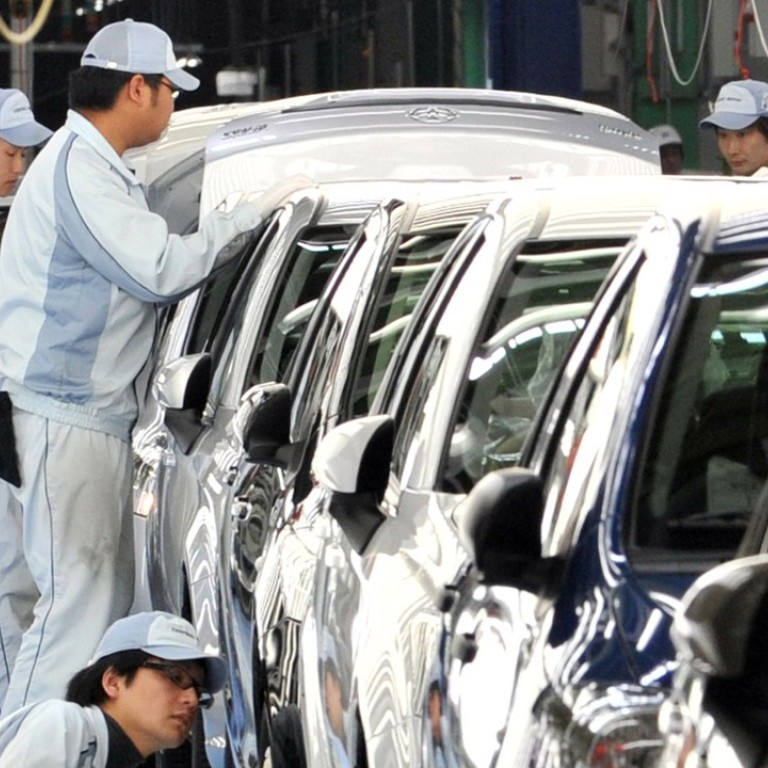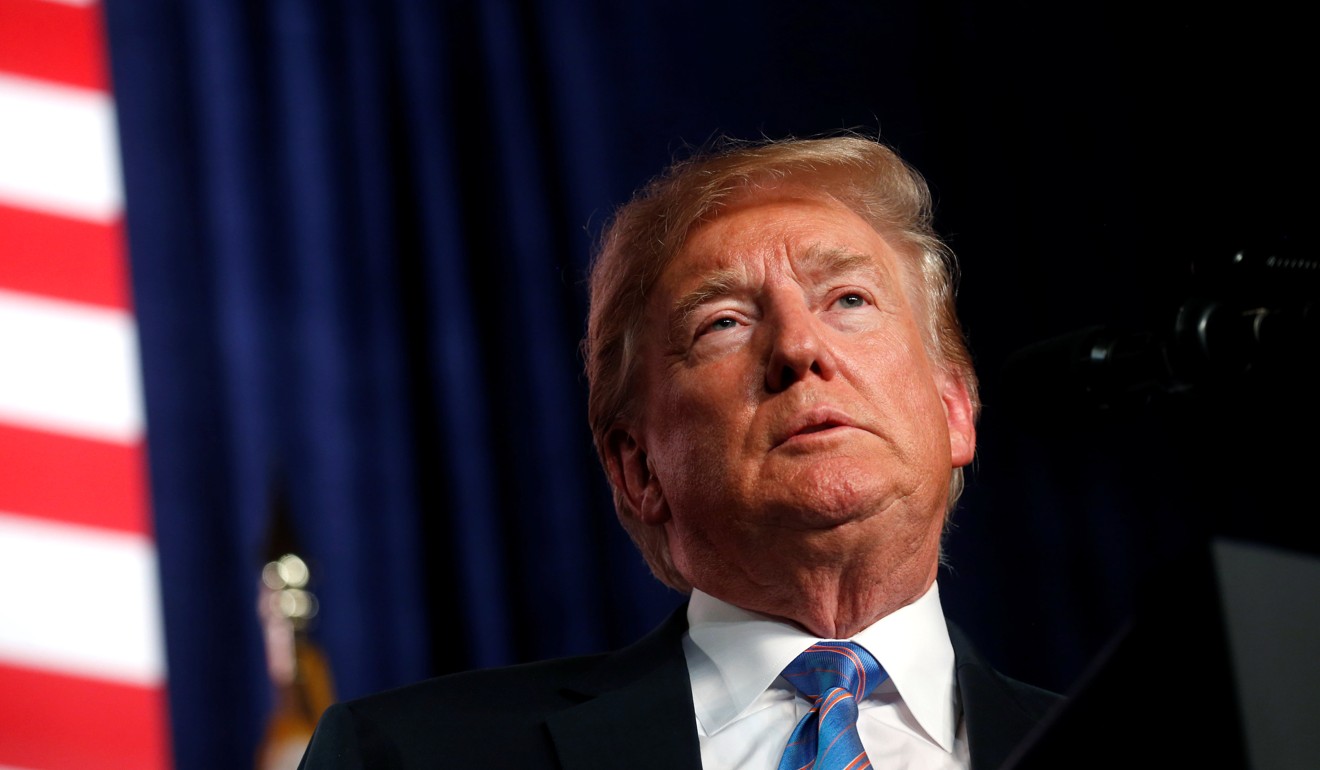
As US and China spar over trade, Japan may avoid a direct hit – for now
First round of tariffs expected to have limited impact, but if conflict worsens it could lead to further appreciation of yen and punitive duties on Japanese cars
Japan, the world’s fourth largest economy, is likely to suffer from weaker trade flows and a further economic slowdown if tensions between China and the US continue to escalate – though a direct impact would be limited for now.
A spiralling dispute could lead to further appreciation of the yen and a large-scale sell-off on global stock markets – or the worst-case scenario of an all-out trade war that may include US President Donald Trump’s threatened punitive duties on Japanese cars, economists warned.
Collateral damage: in a US-China trade war, Europe could be the big loser
Washington and Beijing are set to take the first major step in escalating the trade conflict on Friday, when the Trump administration is expected to slap 25 per cent tariffs on US$34 billion worth of Chinese products from more than 800 categories – including intermediate goods such as parts for planes, printed circuit boards, light-emitting diodes and optical fibres.
“Although Japan has been wary about China’s rise in the past years, it would be an opportunity for Japanese companies if the Chinese economy remains stable,” He Ping, an associate professor at Fudan University, said. “If the Chinese economy slows down because of the trade dispute, that is never going to be good news for Japan.”
There are growing concerns over whether economies in Asia, particularly countries like Japan – a supply chain superpower and exporter to China and the US – will be caught in the crossfire of the first round of tit-for-tat tariffs.
Japan is the biggest contributor to China’s foreign value-added exports to the US, accounting for 5.5 per cent of the total value-added shipments, according to OECD-WTO data. That would mean Japan’s exports of intermediate goods to China and the US would be vulnerable if there was a slowdown in trade flows between the world’s two biggest economies.

“China and Japan – even the whole East Asia region – are deeply intertwined in the complex global supply chain, which means Japan’s economy would be affected,” said Deqiang Liu, an economics professor at Kyoto University.
But analysts agreed that any adverse impact on Japan’s gross domestic product, mostly through supply chain spillovers or exports of intermediate goods, would be small on paper, as very few of its value-added shipments are expected to be affected by potential new US tariffs targeting Chinese products.
“In total, the domestic value-added generated by goods subject to the proposed tariffs from both China and the US is no higher than 1 per cent of total exports, or 0.1 per cent of GDP,” Marcel Thieliant, senior Japan economist at Capital Economics, said in a report.
While the first round of duties is expected to have a limited impact on Japan’s GDP, if the conflict worsens, it could dent confidence and weigh on financial conditions, analysts warned.
A recent survey by the Bank of Japan suggested confidence among Japan’s big manufacturers weakened for a second straight quarter in the three months to June, amid growing concerns about the potential impact of trade frictions on the global economy.
Donald Trump’s trade war is worrying Japanese car-parts giant Denso as it plans China expansion
And while the yen has been stable in the past few months, it is also seen as a potential threat. Its safe haven status means it cannot count on a weaker currency to help offset economic blows, and a 10 per cent appreciation of the currency, if sustained, would depress Japan’s real GDP growth rate by around 0.25 percentage points annually for the first two years, according to a Bank of America Merrill Lynch report.

But the biggest blow would come from the Trump administration following through with its threat of broad-based tariffs on cars and car parts from Japan, which – together with parts and other transport equipment – accounted for 40 per cent of the country’s 15.1 trillion yen (US$136.7 billion) of exports to the US last year.
Trump has floated the idea of raising duties from 2.5 per cent to as much as 25 per cent on auto imports, mostly from Europe and Japan – a move analysts said could give Washington broader leverage in trade negotiations with Tokyo and force it to buy more American products.
If the Chinese economy slows down because of the trade dispute, that is never going to be good news for Japan
Japanese car companies could be looking at losses of 1.2 trillion yen if the 25 per cent auto tariffs are imposed, though China’s decision to cut duties on cars could offset some of the negative effects, according to Shunsuke Kobayashi and Yota Hirono, from Daiwa Institute of Research.
That could have a knock-on effect for the Japanese government, which has committed to completing a long-delayed plan to double the consumption tax in October next year.
“[The Japanese government] is going to have to shore up consumer sentiment just to make sure it’s in healthy territory,” since private consumption is the biggest part of the country’s GDP, said Fung Siu, Asia principal economist with The Economist Intelligence Unit.
Abenomics is dead. Japan’s economy needs a more fundamental solution
While Japan has avoided direct confrontation with the US so far, it is trying to take the lead on reviving free-trade talks in the region, including the Regional Comprehensive Economic Partnership that includes China but not the US. At a meeting in Tokyo on Sunday, trade ministers from the 16 member nations said they hoped to sign a deal this year, which would be a first step towards building what could be the world’s biggest trade bloc.

